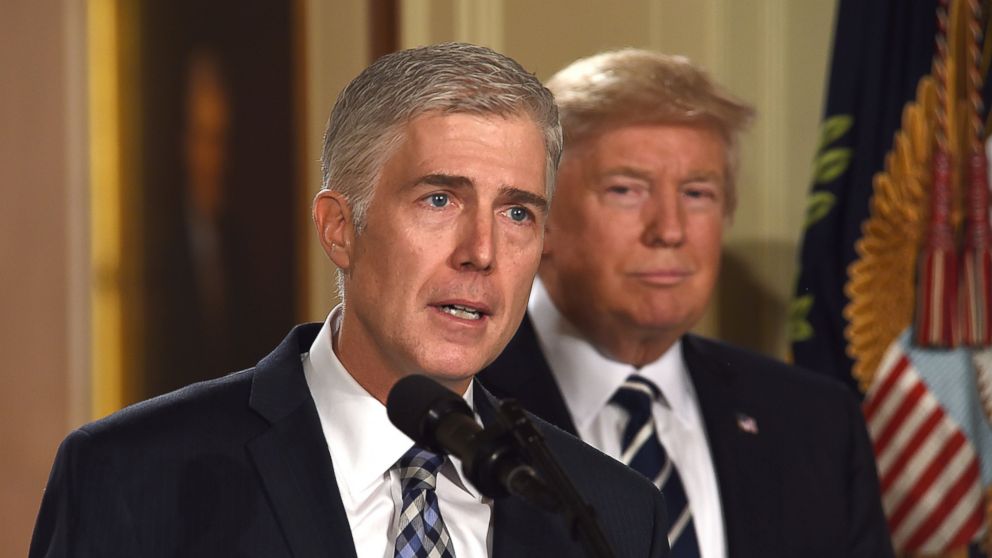Everything You Need to Know About How a Supreme Court Nominee Gets Confirmed
— -- President Trump's Supreme Court nominee, Judge Neil Gorsuch -- hoping to replace fellow conservative Antonin Scalia, who died unexpectedly last year -- begins confirmation hearings Monday.
That means there are still a few hurdles between the Colorado federal judge and a seat on the bench of the nation's highest court.
The president said he expects Gorsuch to be confirmed by the Senate, but Democrats have been lining up in opposition.
Here's everything you need to know about how a Supreme Court nominee gets confirmed:
What Happens Next?
Once the president nominates a potential justice, the Senate Judiciary Committee takes over the process.
The panel schedules at least one hearing where committee members ask questions about a nominee's stances on various issues.
Once a majority of the committee votes in favor of Gorsuch, the full Senate will vote to approve his nomination. A nominee typically requires 60 votes to be approved by the Senate.
Senate Democrats have already said this will be a long process, partly because of lingering resentment that there was never a vote on former President Barack Obama's nominee, Merrick Garland, who returned to hearing cases again as chief judge of the U.S. Court of Appeals for the District of Columbia Circuit after Trump took office.
Senate Minority Leader Chuck Schumer said last month that Democrats will ensure an "exhaustive, robust and comprehensive debate" on the current president's nominee.
The Nuclear Option
One possibility that Democrats could use to delay or prevent Gorsuch’s nomination from being approved is to filibuster on the Senate floor, thereby preventing a vote.
If that happens, Republicans can invoke what is called “the nuclear option.”
This allows the majority leader to change the Senate rules and lower the threshold for approval from 60 votes to a simple majority of 51 votes. There are currently 54 Republicans in the Senate.
This option hasn't been used on a Supreme Court justice, but was last used in 2013 when Republicans were using a filibuster to block a vote on Obama's nominees for federal judges.
Trump has said that Majority Leader Mitch McConnell should "go nuclear" if Gorsuch’s nomination got caught up in political gridlock. McConnell has not said if he will follow the president’s advice.
Past Supreme Court Nominees
Two Supreme Court nominees have not gotten votes in the last four decades.
Most recently, Merrick Garland -- nominated for the Supreme Court by President Obama in March 2016 -- did not receive a vote after the Republican-led Senate refused to vote until after the 2016 presidential election.
In 2005, President George W. Bush nominated Harriet Miers to the bench, but her nomination was withdrawn three weeks later after she faced harsh criticism over her credentials and views.
The last Supreme Court nomination to be defeated in the Senate was Robert Bork, who was nominated by President Ronald Reagan in 1987.
Since the founding of the United States, 161 people have been formally nominated for the Supreme Court and 117 were ultimately seated on the bench. Twelve have been rejected and 13 have withdrawn, according to the Senate. Some were confirmed but not seated and some were never acted on.
ABC News' Erin Dooley contributed to this report.




